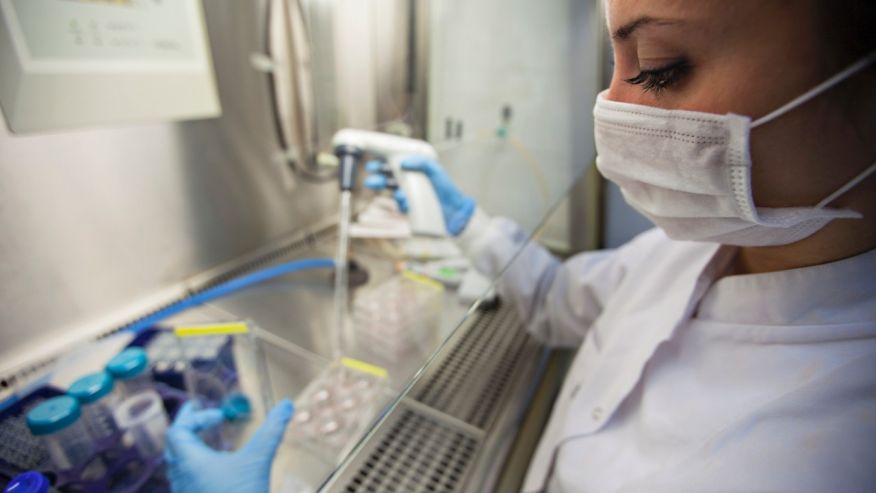Researchers discover potential epilepsy drug using zebrafish
An antihistamine used to treat itching may be the key to preventing seizures in children with a rare, yet severe form of epilepsy known as Dravet Syndrome.
The discovery was made by screening hundreds of government-approved drugs in animals with the same genetic mutation as children with the disorder. But instead of using rodents – the typical animal model for drug screenings – researchers used an unlikely test subject for their experiment: zebrafish.
According to the researchers, the antihistamine known as clemizole could be the first line approach for reducing the effects of Dravet Syndrome – a condition with very limited treatment options.
“Dravet Syndrome is a catastrophic form of childhood epilepsy, and it often leads to severe symptoms and death,” Scott Baraban, a professor of neurological surgery at the University of California, San Francisco and William K. Bowes Jr. Endowed Chair in neuroscience research, told FoxNews.com. “Within the first year of life, children will start to have seizures and have several hundred per day. They’ll have delays in speech, cognitive problems, ataxia, which is trouble standing… And while there are drugs that are given that reduce the effects, there aren’t too many treatment options for these kids.”
Baraban first pioneered the idea of using the small, translucent zebrafish to test drugs for epilepsy in 2005, as the zebrafish’s genome is 80 percent identical to the human genome. In order to better understand the effects of a certain drug, researchers place zebrafish larvae – which are no longer than a human eyelash – into petri dish baths filled with that drug. Since the larvae require the water for respiration, the drug immediately enters their systems through the bath, allowing researchers to quickly observe how the fish respond.
“The fact that fish are permeable to the drug – that’s a huge advantage for drug screening,” Baraban said. “Most drugs are tested using a cell-based culture, but when drugs move on to next stage in the animal model, they’re often toxic. So the advantage with zebrafish is we can test effectiveness and toxicity of the drug at the same time.”
Baraban decided to use this drug screening method for Dravet Syndrome after he came across a zebrafish with a mutation in the SCN1A gene, the same genetic mutation commonly associated with the epileptic disorder. The SCN1A gene codes for a voltage activated sodium channel, which allows ions to pass through the membranes of neurons and regulate how they fire. In Dravet Syndrome, these channels allow too many ions to pass through the neural membranes, causing the neurons to fire excessively.
Zebrafish with the SCN1A gene mutation showed the same developmental pattern as children with the mutation, moving around in erratic patterns whenever they experienced a seizure. Just as children with Dravet Syndrome begin having seizures one year after birth, the fish began experiencing seizures three days after fertilization. And though the fish typically died after just 10 to 12 days, Baraban said they are extremely easy to breed, yielding incredibly large cohorts for testing.
“One breeding pair will give 100 pairs of eggs, so one quarter of the offspring will have the mutation we’re interested in – and they’ll have spontaneous seizures,” Baraban said. “We decided to do a hyper approach screening, where we take a library of commercially available drugs and screened them to see if they stop the seizures in fish.”
Baraban’s team tested a random assortment of 320 compounds in a chemical library of drugs that had already been approved by the Food and Drug Administration. Through this indiscriminate testing, they stumbled upon the antihistamine clemizole, which eliminated the seizure activity in the fish within 10 minutes of application.
The reason behind clemizole’s efficacy remains a mystery, especially since antihistamines can sometimes make seizures worse. The researchers even tested 10 other antihistamines on the fish, but none was successful at blocking the seizures. Baraban theorized that another biological mechanism in clemizole, apart from its antihistamine properties, is responsible for the therapeutic effects.
Because clemizole is already FDA-approved, Baraban hopes it can soon be tested in small clinical trials of people suffering from Dravet Syndrome and that it will produce little to no side effects. He is also fairly confident the drug will be effective in humans, since the mutant zebrafish so closely mirrored humans with the condition.
“We screened (the zebrafish) with epilepsy drugs already given to kids with Dravet Syndrome, and the fish predicted the same compounds,” Baraban said. “So the drugs that work in humans also worked in fish, and the drugs that didn’t work in humans didn’t work in the fish. So it suggests that clemizole could be directly applicable.”
Not only is Baraban’s research inspiring for people suffering from Dravet Syndrome, but his zebrafish method could be used to find therapeutic agents for various other conditions caused by mutations in a single gene. He said this technique offers a much more tailored approach to drug screening.
“There’s no reason you couldn’t model lots of different genetic disorders in zebrafish,” Baraban said. “So genetic forms of Alzheimer’s, Parkinson’s, they can all be modeled in zebrafish and used in drug screening. And in the epilepsy field this is just one example. So if you’re child has a gene mutation, we can make fish with that specific gene mutation and screen for drugs that are effective for your children.”
The research was published online in the journal Nature Communications.
source: http://www.foxnews.com/health/2013/09/03/researchers-discover-potential-epilepsy-drug-using-zebrafish/#ixzz2dtomTNDN










 At least 93 new dengue cases were reported Tuesday in Odisha, taking the total number of affected people to 2,593 since June, an official said.
At least 93 new dengue cases were reported Tuesday in Odisha, taking the total number of affected people to 2,593 since June, an official said.



